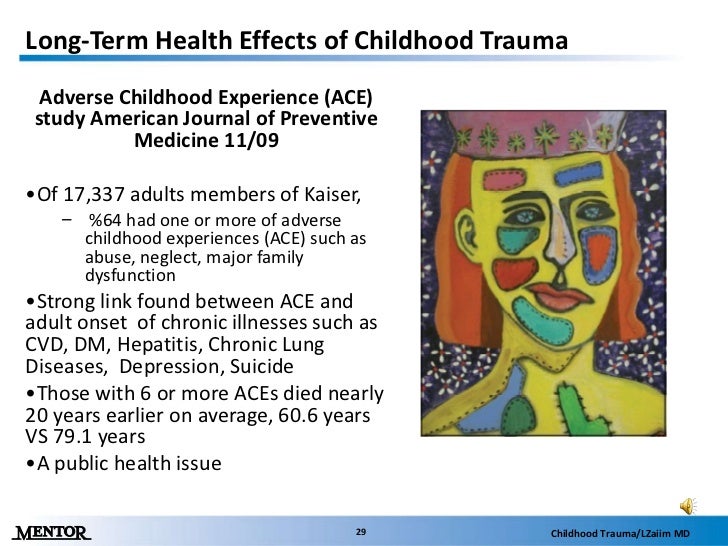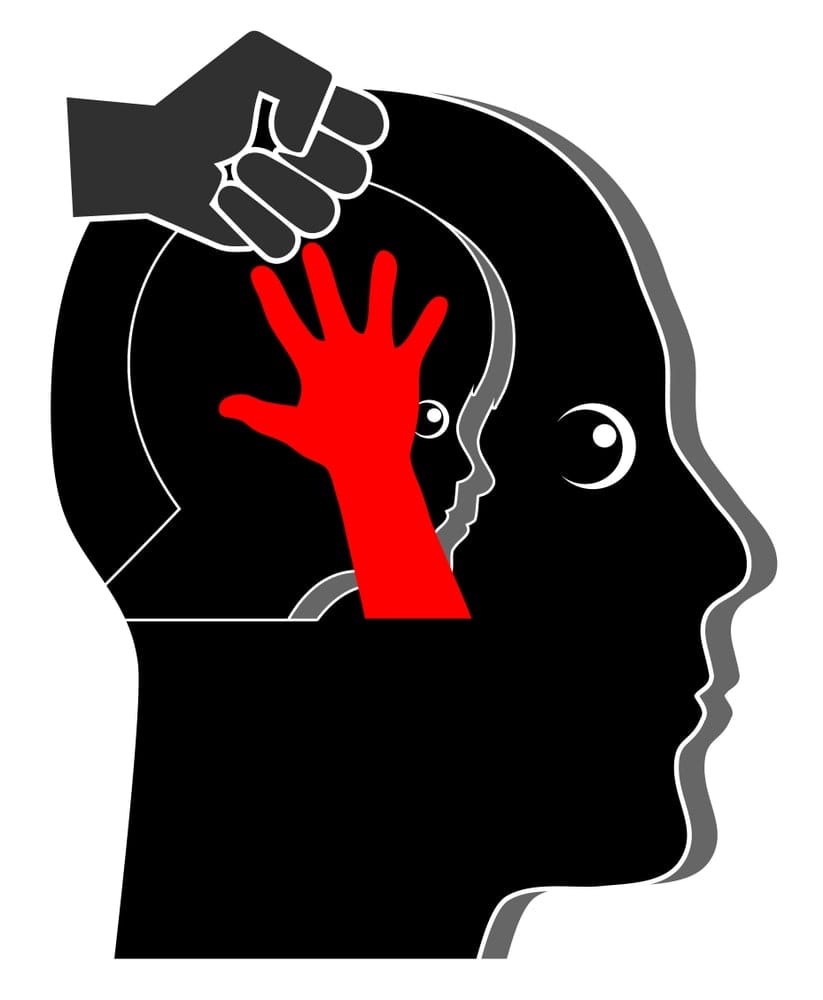
It includes a parent or other caregiver slapping, kicking, hitting, or neglecting a child.
Physical Abuse – When a parent or other caregiver does something to cause physical pain to a child, this is physical abuse. Medical Trauma – Medical procedures and illnesses that a child experiences may result in physiological and psychological trauma, called “medical trauma.”. “intimate partner violence” or “domestic violence”). Intimate Partner Violence – A child may witness harm inflicted on a parent by another parent or partner (a.k.a. Early Childhood Trauma – These traumatic experiences occur in children from the ages of birth to 6 years. Disasters – The list of disasters that can cause childhood trauma when children experience them includes hurricanes, tornados, floods, earthquakes, wildfires, and extreme weather events such as drought, intense heat, wind, and rainstorms. Symptoms of childhood trauma in adulthood how to#
This requires professional treatment for the child to learn how to heal from childhood trauma. Complex Trauma – According to the NCTSN, complex trauma refers to both the child’s exposure to more than one traumatic event and the long-term and wide-ranging effects from the trauma.
 Community Violence – Children who witness intentionally committed violence in the community can be affected by this type of trauma. Bullying – The term refers to the intentional and unsolicited act of inflicting harm (emotional, physical, psychological and social) on someone less powerful, especially children. Briefly, and in alphabetical order, these include: For example, the National Child Traumatic Stress Network (NCTSN) lists 12 common types of childhood trauma. What Are Common Sources of Childhood Trauma?Īccording to experts, there are many sources of childhood trauma. In this case, the more appropriate term for a person’s experience would be “childhood trauma.” While these issues may be significant enough to warrant therapy, they do not entail the experience of a traumatic or shocking event or situation during childhood. Many people in adulthood may look back at how they were raised and identify areas of dysfunction (intense sibling rivalry, an emotionally distant parent, etc.) In some cases, they may be able to trace the roots of a mental health condition like depression to specific issues in childhood. There is an important distinction to be drawn between unresolved childhood trauma and unresolved childhood issues, both of which may benefit from therapy. Unpredictable emotions, flashbacks, relationship problems and physical symptoms like headaches or nausea are some of the ways that unresolved trauma can manifest, according to the American Psychological Association. Trauma that is “unresolved” can be characterized by mental, physical, emotional and/or behavioral symptoms or distress.
Community Violence – Children who witness intentionally committed violence in the community can be affected by this type of trauma. Bullying – The term refers to the intentional and unsolicited act of inflicting harm (emotional, physical, psychological and social) on someone less powerful, especially children. Briefly, and in alphabetical order, these include: For example, the National Child Traumatic Stress Network (NCTSN) lists 12 common types of childhood trauma. What Are Common Sources of Childhood Trauma?Īccording to experts, there are many sources of childhood trauma. In this case, the more appropriate term for a person’s experience would be “childhood trauma.” While these issues may be significant enough to warrant therapy, they do not entail the experience of a traumatic or shocking event or situation during childhood. Many people in adulthood may look back at how they were raised and identify areas of dysfunction (intense sibling rivalry, an emotionally distant parent, etc.) In some cases, they may be able to trace the roots of a mental health condition like depression to specific issues in childhood. There is an important distinction to be drawn between unresolved childhood trauma and unresolved childhood issues, both of which may benefit from therapy. Unpredictable emotions, flashbacks, relationship problems and physical symptoms like headaches or nausea are some of the ways that unresolved trauma can manifest, according to the American Psychological Association. Trauma that is “unresolved” can be characterized by mental, physical, emotional and/or behavioral symptoms or distress. 
“Unresolved trauma” is an active and usually disruptive emotional response to a terrible event or experience. Sometimes misinformation or confusion in the population at large can be obstacles to finding trusted treatment answers and solutions. The question of how to heal from childhood trauma can be complex, however. That’s because unresolved childhood trauma can seriously impair an adult’s relationships, life view, happiness and health. How Do You Heal from Childhood Trauma?Ĭhildhood trauma may crop up later in life. This article explores the topic of unresolved trauma, what it means, how to heal from childhood trauma and what those steps look like for overcoming childhood trauma. Sometimes when a childhood trauma is unresolved, it needs to be dealt with later in life. Many people have had traumatic experiences growing up. Will Insurance Cover Behavioral Treatment?.Beacon Health / Value Options Insurance.Rehab Success Rate – Does It Really Work?.

Shatterproof FHE Health (First Responders).







 0 kommentar(er)
0 kommentar(er)
